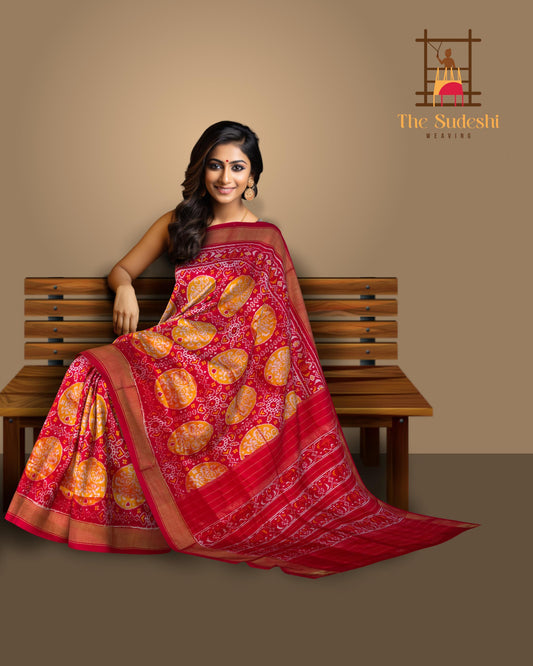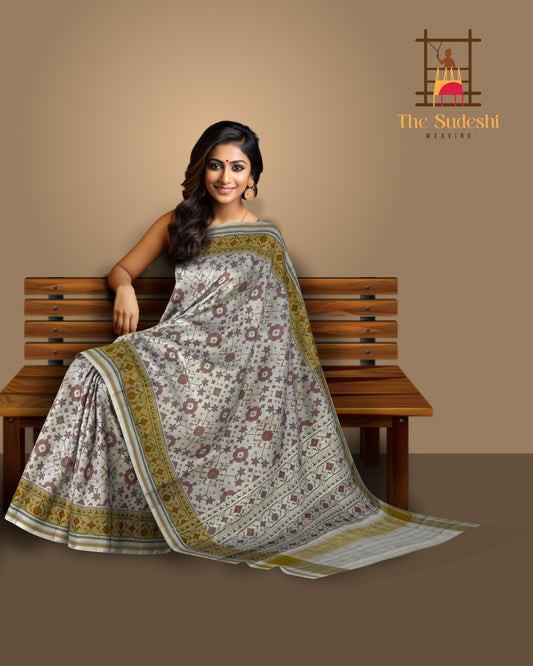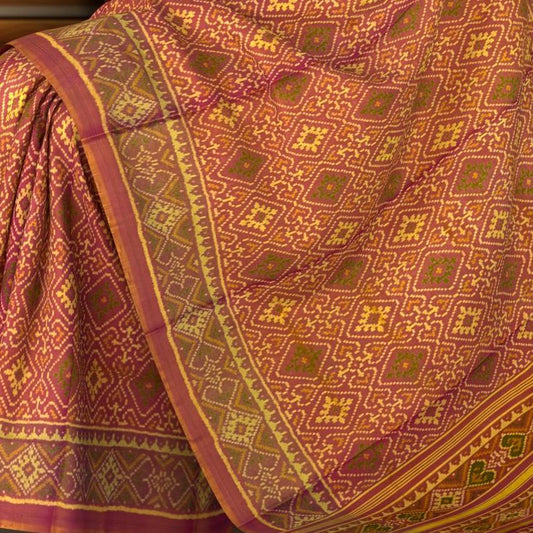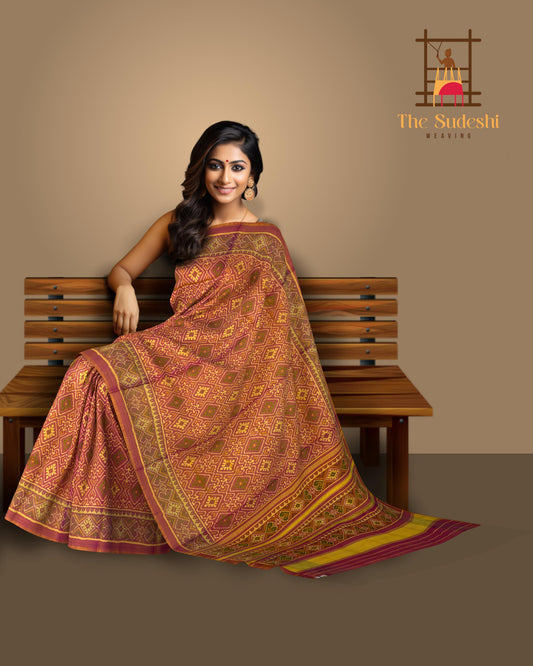The Art of Handloom Weaving: A Timeless Craft
Handloom weaving is one of the oldest and most intricate forms of textile production, dating back thousands of years. It is a craft that combines artistry, tradition, and skill to create beautiful fabrics that tell stories of culture and heritage. In this blog, we’ll take a deep dive into the fascinating process of handloom weaving, exploring how raw fibers are transformed into exquisite textiles.
Handloom weaving is the process of creating fabric by interlacing two sets of threads—the warp (lengthwise threads) and the weft (crosswise threads)—using a hand-operated loom. Unlike mechanized weaving, handloom weaving is a manual process that relies on the weaver’s expertise, patience, and creativity. Each handloom product is unique, reflecting the weaver’s skill and the cultural traditions of the region.

The journey of handloom weaving begins with the selection of raw materials. Natural fibers like cotton, silk, wool, or jute are commonly used. The choice of material depends on the type of fabric being woven and the cultural practices of the region. For example, silk is often used for luxurious sarees in India, while cotton is preferred for everyday wear.
Once the raw fibers are collected, they are spun into yarn. This process involves cleaning, carding (aligning the fibers), and twisting them into long, continuous threads. Traditionally, this was done using a spinning wheel or spindle, though modern handloom weavers may use machine-spun yarn for efficiency. The yarn is then dyed using natural or synthetic dyes. Natural dyes are derived from plants, minerals, and insects, offering an eco-friendly and sustainable option. The dyeing process requires precision to achieve the desired colors and shades. After dyeing, the yarn is dried and prepared for the next step.
Warping is the process of setting up the loom with the lengthwise threads (warp). The yarn is carefully measured and wound onto a beam, ensuring that the threads are evenly spaced and tensioned. This step is crucial, as any mistake can affect the final fabric. The warp threads are then passed through heddles (wires or cords with an eye in the center) and a reed (a comb-like tool). The heddles help separate the warp threads to create a shed (an opening) for the weft thread to pass through, while the reed ensures the threads are evenly spaced.
Now comes the most intricate part—the actual weaving. The weaver uses a shuttle to pass the weft thread through the shed created by the warp threads. By alternating the position of the warp threads using foot pedals (treadles), the weaver creates a pattern. This process is repeated row by row until the fabric is complete. The weaver’s skill determines the complexity of the design, from simple plain weaves to intricate patterns like ikat, jacquard, or brocade. Once the weaving is complete, the fabric is removed from the loom. It may undergo additional processes like washing, starching, or ironing to enhance its texture and appearance. Some fabrics are also embellished with embroidery or block printing to add decorative elements.
Handloom weaving is more than just a craft—it’s a cultural heritage passed down through generations. Each region has its unique weaving techniques, patterns, and motifs that reflect its history and traditions. For example, the vibrant Patola sarees of Gujarat, the delicate Pashmina shawls of Kashmir, and the intricate Kanjeevaram sarees of Tamil Nadu are all celebrated for their artistry. Moreover, handloom weaving is a sustainable and eco-friendly practice. It requires minimal energy, produces little waste, and supports local artisans and rural economies. By choosing handloom products, we contribute to preserving this ancient craft and promoting ethical fashion.

Despite its cultural and environmental significance, the handloom industry faces numerous challenges. Competition from machine-made textiles, lack of access to markets, and dwindling interest among younger generations threaten the survival of this craft. Supporting handloom weavers by purchasing their products and raising awareness about their work is essential to keeping this tradition alive.
Handloom weaving is a testament to human creativity and ingenuity. It is a process that transforms simple threads into works of art, carrying with it the stories and traditions of countless generations. By understanding and appreciating the effort behind each handloom product, we can ensure that this timeless craft continues to thrive in the modern world. Next time you hold a handloom saree, scarf, or shawl, take a moment to admire the skill and dedication that went into creating it. Let’s celebrate and support the artisans who keep this beautiful tradition alive.
If you’re inspired by the art of handloom weaving, consider purchasing handloom products from local artisans or cooperatives. Share this blog to spread awareness about the craft and its significance. Together, we can make a difference in preserving this ancient art form for future generations.







Leave a comment
Please note, comments need to be approved before they are published.